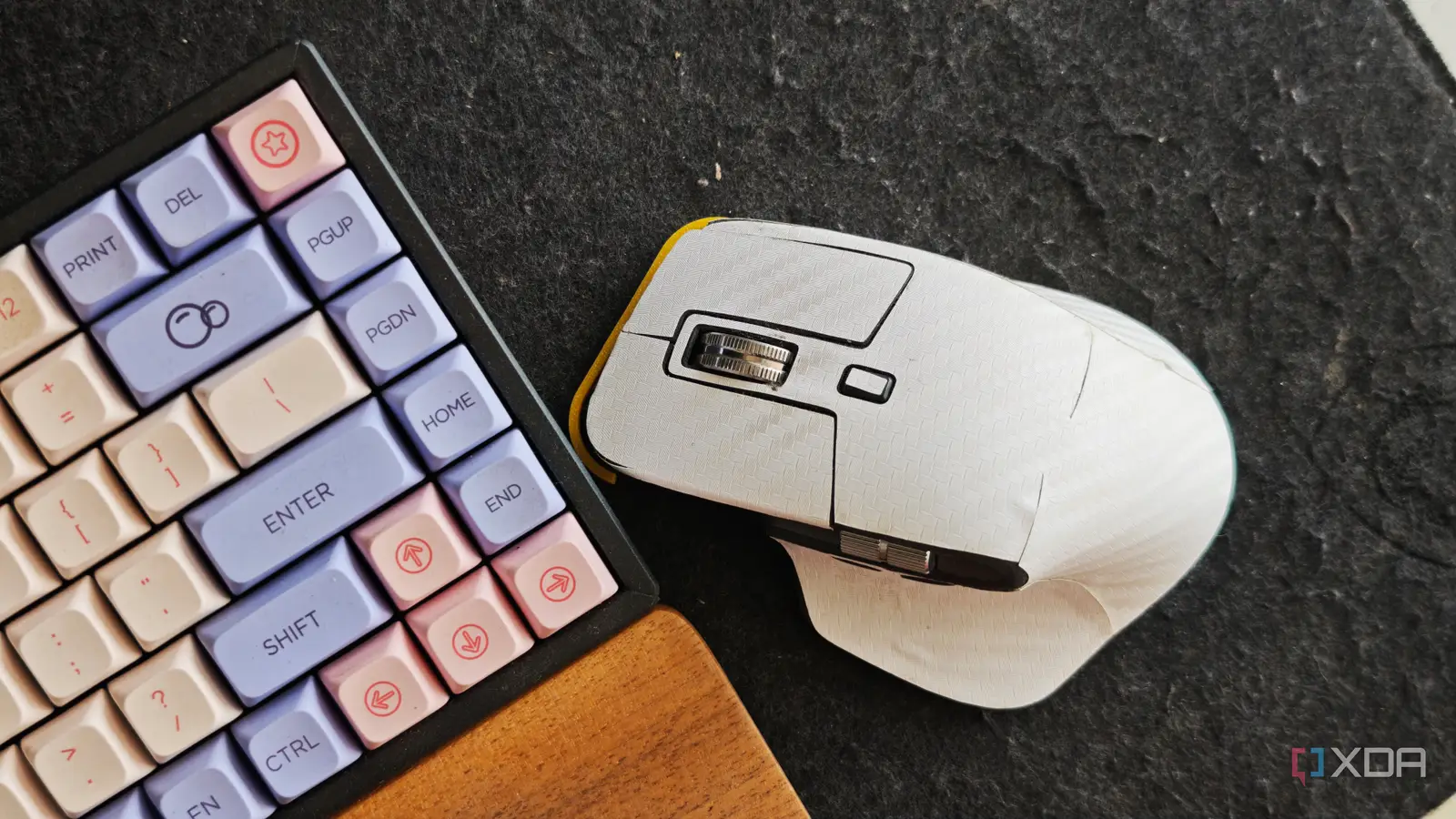
In the sprawling, hyper-competitive world of PC peripherals, choosing a new mouse feels like a declaration of identity more than a simple purchase. I’ve been branded on Discord servers by the mouse I use, and there’s a clear set of features that set gaming mice apart from the ones that truly mean business. However, a good mouse, at its core, is an extension of your hand — a tool that should fade into the background, seamlessly translating your intent into action on the screen. The perfect mouse is the one that has exactly the features you need and none of the ones you don’t.
The sad reality is that there’s been little groundbreaking evolution in mouse mechanics in the past five years, and marketing machines are hell-bent on selling you features you’ll use just one percent of the time, if at all, you need them to begin with. In a bid to stand out, manufacturers often load their products with features that sound revolutionary on the box but offer diminishing, if any, returns in practice. I’ve fallen for the hype more times than I’d like to admit, paying a premium and forgetting about the features a week later. I’ve learned a few hard lessons about what truly matters, and what’s just expensive fluff. These are the mouse features I regret spending money on, along with a breakdown of why I’ll never fork over cash for them again.
Switchable weights
A solution in search of a problem
I remember the era when a premium gaming mouse wasn’t complete without a tiny, clunky case filled with little metal pucks. The idea was that you could fine-tune the weight and balance of your mouse to achieve the perfect “feel.” I spent hours experimenting, adding a gram here, removing one there, convinced I was dialing in my aim like a professional marksman. In reality, all I was doing was making my mouse heavier for no good reason. The entire industry has since sprinted in the opposite direction, with ultra-lightweight mice becoming the standard, and justifiably so. A lighter mouse is just easier on the body, no matter your application.
I don’t see scenarios where having a heavier mouse would make me a better gamer or boost my productivity. Every flick, every swipe, every minute adjustment requires you to overcome that inertia. Over a long gaming session or a full workday, that added weight translates directly into increased strain on your wrist and forearm. No matter your grip—palm, claw, fingertip, or some hybrid of these, your muscles work harder to move a heavier mouse.
Sure, a tunable weight kit doesn’t make the cursor a leaden brick, and there’s an argument that the mouse comes to rest quicker after a glide when heavier, so you won’t overshoot click targets. However, weights are the wrong treatment for this problem. If you find your aim is erratic, lower your sensitivity or DPI setting. A lower sensitivity forces you to use your whole arm for large movements, which is more ergonomic and provides far greater control for fine adjustments. I feel the trend toward sub-70-gram mice is overdue for correction, just like staggered keyboards.
High polling rates and DPI
The pointless arms race
The PC hardware market has ingrained the notion that larger model numbers usually equate to better performance, and even if the performance is only incrementally better, brands often justify higher price tags to match. I’ve seen this in CPUs, GPUS, PSUs, and even mice. Polling rate is the frequency at which a mouse reports the pointer position to the connected computer, and DPI (dots per inch) measures sensor sensitivity to movement of the mouse. In both cases, higher is better, but there’s an obvious point past which the returns diminish. That’s around 1,000Hz polling rate and 4,000DPI, in my experience.
The jump from an old, laggy USB mouse at 125Hz to a modern standard of 1000Hz is a night-and-day difference you can immediately feel, but the leap from 1000Hz to 8000Hz comes down to fractions of a millisecond. That difference is so minuscule that it’s virtually imperceptible to human senses. As for DPI, high DPI can be useful in niche situations, such as navigating a massive 49-inch ultrawide monitor where you want to cross the entire screen with a slight wrist movement. For a standard 1080p or 1440p monitor, however, setting your DPI to 20,000 makes the mouse super-twitchy. These features feel less like genuine user-focused innovations and more like proof that R&D departments are still working on something. It’s a marketing gimmick, an easy number to slap on a box to make a product seem more “advanced” than its predecessor. Don’t fall for it. You just need a solid sensor and steady 1,000Hz polling.
Aftermarket mouse feet
Gliding on the placebo effect
This is one for the hardcore modders who love tricking out their featherweight mouse with custom feet or skates. These come in materials such as virgin-grade PTFE, glass, or even polished ceramic, all promising a nearly frictionless glide. I’ve tried them, and while I’ll concede they can feel different, they are a pointless accessory for almost everyone. They work by altering the coefficient of friction between your pointing device and the mouse pad, usually making the glide smoother.
I urge you to step back and consider why a smoother glide would be beneficial. A majority of users keep their hand planted on the device at all times, and seldom lift it to glide free like an ice hockey puck. Moreover, reputable mice today already ship with perfectly good 100% PTFE feet that glide smoothly on any decent mouse pad. The marginal improvement you get from a $20 set of aftermarket glass skates is felt in two fringe cases — your mouse came with objectively terrible, scratchy feet that feel like they’re digging into your mouse pad, or you have no other option because you just repaired your mouse and the screws were under the stock feet. Skates may give esports gamers a slight competitive edge, too. I still maintain that a larger, higher-quality mouse pad is a better investment with noticeable improvement in comfort and performance.
Scroll wheel tilt
The forbidden dance
On paper, a tiltable scroll wheel sounds like a fantastic idea. In addition to scrolling vertically and clicking down, you can nudge the wheel left or right for two extra inputs. The primary advertised use for this is, of course, horizontal scrolling. It’s meant for navigating wide spreadsheets, video editing timelines, or sprawling websites without having to click and drag the scrollbar. It’s a feature I’ve paid extra for on multiple mice, and it is, without a doubt, one of the most poorly implemented and useless functions I have ever encountered.
I’ve found the side clicks are universally stiff, mushy, and lack the satisfying tactile feedback of a proper button. Trying to perform a smooth, controlled horizontal scroll is next to impossible; you end up with a series of jarring, imprecise lurches. After using it a few times, I’ve mostly forgotten it even exists. Otherwise, I’ll usually remap it to a macro action like Ctrl + Shift + Up/Down arrow to select text. That still feels like a workaround for a failed primary function. A feature you have to find an alternative for, because its intended purpose is poorly executed and not worth hard-earned money. I’d rather get a mouse with a secondary scroll wheel for the thumb.
The best mouse is the one you forget you’re using
After years of chasing specs and falling for marketing ploys, my philosophy on peripherals has undergone a dramatic simplification. A mouse is a tool, and the best tools are the ones that do their job so effectively that they become invisible. The endless pursuit of more buttons, higher DPI, faster polling rates, and exotic materials often distracts from the fundamentals: shape, weight, and sensor reliability.



